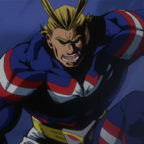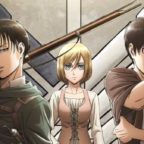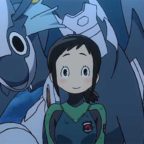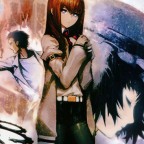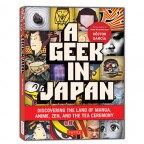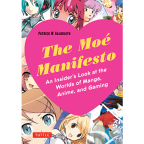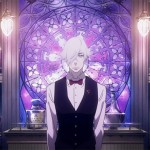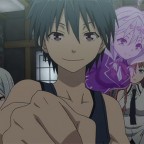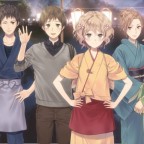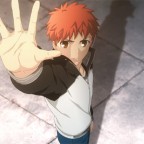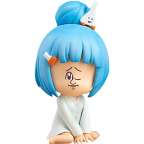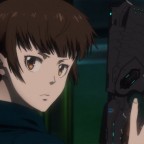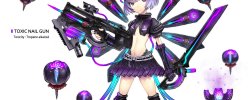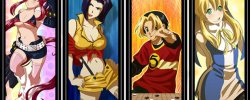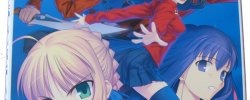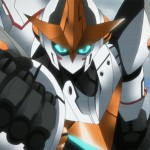Nadav
The best and worst of My Hero Academia Season 3
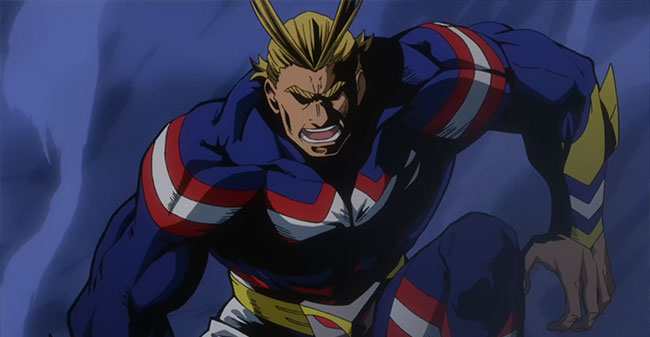
The third season of My Hero Academia was filled with competitions, life threatening situations and the passing of the torch from All Might to Deku. Here are 3 aspects this season nailed and 3 the series still needs to improve upon.
The villain league
One of the weakest elements of the show that improved dramatically in the third season. When it was introduced back in season one the league had several issues. It was an amalgamation of no-bodies (most of which were promptly caught and sent to jail), had no clear motive behind it and lacked in both power and leadership. Season 3 introduced a select number of new charismatic villains that will hopefully be flushed out and properly grow as character. Some of these villains follow Stain’s ideology, thus making the league more progressive and less anarchistic in nature. Moreover, these new faces have already stolen some screen time from the awfully bland Shigaraki Tomura and that alone makes the league more relatable and less juvenile in my opinion.
A nicely balanced crew
One aspect that My Hero Academia really excels at is granting ample screen time to most of the heroes in class A. This is no easy feat considering the class consists of a whopping 22 students. The show skillfully mitigates the huge roster by dividing the heroes into groups (Deku’s group, Bakugo’s group, Todoroki’s group, and what I fondly refer to as the “pushover” group). By showing Bakugo’s group every time he appears on screen all the members of said group receive good screen exposure. The mangaka (Horikoshi Kohei) still has his favorites so Deku, Bakugo and Tsuyu chan (aka Floppy) do get more love and attention than the rest of the crew but this attention might sway in other directions in future story arcs. Overall My Hero Academia shows more character diversity when compared to other school-themed anime (especially Naruto and Negima).
The passing of the torch
Every long-running series must deal with winding story arcs and plot-stagnation. Luckily My Hero Academia is far from reaching such a point. Season 3 progressed the series in meaningful ways, both in terms of world-building and plot. This season instilled in our young heroes the notion that they must act lawfully, even if that means they cannot actively counteract what the villains are doing. Until that point they had been under the impression that villains abuse their powers for bad deeds and are thus labeled as such. But this season taught them that using one’s power without permission, even for the good of the people, is a violation of the law. This simple, yet hard-to-stomach, truth forces them to grow and become adults almost instantly.
In addition, this season also saw the end of All Might’s and All for One’s long fight, with both effectively passing on their ideals and will onto their young apprentices (Deku and Shigaraki respectively). Watching All Might’s final fight proved both exciting and saddening, and his last words of encouragement to the people (and Deku in particular) will surely continue to echo for seasons to come.
Low risk, low reward
Shounen shows are known to favor their main characters greatly, and it is not uncommon for the protagonist of such shows to always come out on top even when they are faced with the hardest of pinches. That said, a series that takes no risks ironically risks becoming too mundane. After watching three seasons of My Hero Academia it’s quite clear to me that Horikoshi Kohei is not willing to put his golden eggs at risk. Plainly put, the students of class A are too precious for him to sacrifice, but that makes the dangerous situations in which they are put into a tad too predictable. Knowing that the entire class will survive any ordeal, no matter how hard, diminishes the sense of tension the series could have when they face these ordeals. Case in point: Bakugo was abducted in the beginning of the season, and the following episodes went into great lengths to instill the sense of loss caused by this abduction; but shortly afterwards Bakugo easily breaks free with no reproductions whatsoever while the more experienced adult heroes suffer great losses.
Alas, My Hero Academia does not exist in a vacuum. Established series such as Naruto Shippuuden and Hunter x Hunter have demonstrated that sacrificing or maiming some characters when the going gets rough is elementary and important to the maturity of an action show. If My Hero Academia wants to play in the same playground together with the big boys it needs to take off the training wheels and make some hard choices.
Chicken fights and laser tags
I know manga artists face many hardships when coming up with new content and are on a tight schedule to boot, but My Hero Academia’s quality of plot consistently drops when the students must attend a test. The second season had the dubious cavalry battle competition, which mostly made no sense and appeared very childish. In the midst of the third season class A enters the Hero exam, which is supposed to be tougher and harder to champion, but turns out to be a mix between a game of laser tag and a paintball match. The entire exam quickly deteriorates into a farce, with class A winning by sheer coincidences, luck-based tactics and the act of running into weak competitors. One genuinely superb fight orchestrated by Yaoyorozu remains the sole saving grace in what is otherwise a bad story arc. This is not the first, nor the second time this series has tried to raise the bar by preparing a “serious” test only to have it become a parody of itself, and it is definitely not ok.
Shigaraki Tomura
Originally introduced in season one, Shigaraki Tomura is the main antagonist of My Hero Academia and the leader of the self-proclaimed villain league. For the longest time his motive for wanting to take down All Might was kept under wraps, but this last season gave us a small glimpse at his past and his reasons for hating the modern “hero society”. This revelation helps establish his background story and was certainly a step in the right direction, but soon this sort of retroactive justification just won’t be enough. You see, up until now Shigaraki Tomura’s authority over the villain league stemmed purely from his association to All for One. The latter introduced Shigaraki to powerful allies, provided him with Nomu and with knowledge about All Might and the Hero Academy. Unfortunately for Shigaraki, his connection to All for One has been severed in season 3, which means he must now rely on his own leadership and management skills if he wishes to retain his position as head of the league. As it stands his conduct is not up to par. He has not proven himself to be a strong, reliable or even a trusting leader. I hope future seasons of the series will address this glaring issue and either assert his credibility or produce a better candidate for the coveted leading role.
The truth about Goblin Slayer
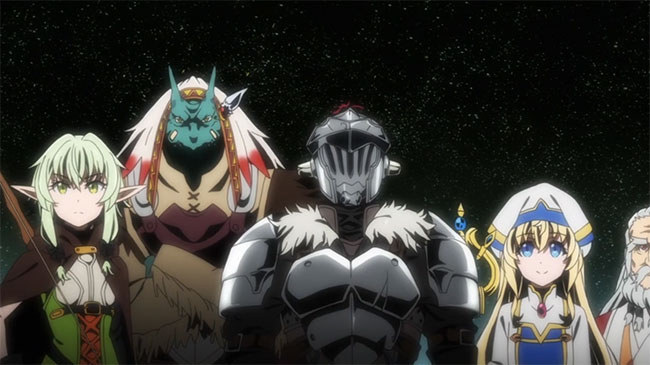
Goblin Slayer focuses on a mysterious warrior who fosters a lifelong grudge against goblins and has been relentlessly hunting them. He does so by taking on guild requests, thus earning a decent living while maintaining his anti-goblin ideology. Because he takes on goblin-extermination tasks and nothing else the people around him started referring to him as the Goblin Slayer. The Goblin Slayer has been known to work alone, but as the show progresses he eventually forms ties with a rather unique party that includes a human priestess, a high elf, a dwarf and a lizardman. Together they take on hordes of goblins for money, glory and to protect humanity from an ever-encroaching bigger evil.
Goblin Slayer quickly became the talk of the internet when its first episode debuted in early October. For those who haven’t seen it yet, that episode included slaughter, several showcases of female nudity and even rape. The scenes which that episode chose to portray reminded me of the 90’s, when provocative movies like Ninja Scroll and Akira also shocked their audiences with similar imagery. Goblin Slayer’s intro truly is dark, but after watching half of the show’s first season I can safely write that the aforementioned first episode does not represent the full package you will be getting. From the second episode onwards the series dials down the nudity and sexual acts considerably. This is because the first episode exists to show us what happens when an inexperienced group tries goblin-hunting. The party that forms around the Goblin Slayer, on the other hand, includes mostly experienced warriors and magicians. Their daily activities form the backbone of the show and include fighting (mostly goblins), performing skits, camping and buying supplies. The series has a light underlying plot about some kind of ancient evil that has been revived/unleashed once more into the world, but at this point that backstory is merely the frosting on the goblin-hunting cake.
The anime is based on a dark fantasy light novel, and the story has a traditional D&D inspired theme to it. This is where Goblin Slayer really shines. A few sequences unapologetically introduce D&D dice. Others showcase side characters (NPCs) that act extrovertedly queer, just as one would expect to see when entering a tavern or a guild hall while playing a traditional D&D pen-and-paper campaign with a group of friends. The Goblin Slayer himself uses “burning water” that he bought from an alchemist, as well as one-use magic scrolls. Goblin Slayer’s party features staples of the D&D universe, with each character serving a traditional role: Goblin Slayer (warrior) and lizardman (priest) are frontal fighters, the elf (archer) and dwarf (shaman) attack from behind while the priestess supports from a safe distance. I really enjoyed the hardcore D&D references and look forward to seeing more example of old-school equipment as well as monsters from that universe’s lore.
Visually Goblin slayers is a mix of video game tropes and contemporary anime fanservice. The female elf wears a skimpy outfit while the priestess unapologetically wears a pajama. Frankly, most of the armor and outfits for both men and women look nonsensical; although I did appreciate the Goblin Slayer forcing the priestess to wear chain mail under her dress). All of the human I’ve seen in the show up to this point are attractive (if somewhat forgettable) bishounen, and the adult women are all well-endowed and thin-figured. This aspect of the show is a bit disappointing and I would have appreciated it if the visuals adhere to the D&D formula and provided a more diverse array of body types as well as realistic outfits.
Attack on Titan season 3 review
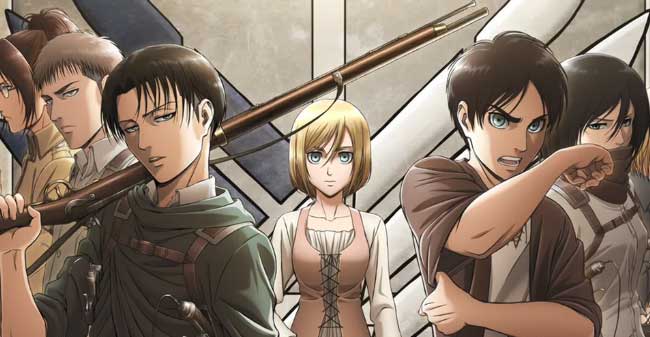
Attack on Titan’s first season was an explosion of violence, horror and death. It came following a few years in which the anime community was very much preoccupied with moe-centric shows and took the viewers by surprised due to its intensity and unapologetic tragic nature. In was shocking, it was cool, and people couldn’t get enough of it. But the first season did have a couple of major flaws. The main characters were one dimensional, the truth about the Titans was left intentionally hidden and a lack of budget in the latter episodes meant that some episodes did not live up to the standards set by the rest of the season. The second season was paced better and did not suffer from budget issues. It still had good action, with plenty of horrifying Titans roaming around, and exposed more of the outer world. It did not, however, attempt to flesh out the characters nor did it answer most of the questions raised in the first season. So when the third season came along I lowered my expectations and prepared myself for more mindless action. Luckily I was wrong. Instead of another action-packed season I found myself watching something different. A distinct season that sets different priorities when compared to those that came before it.
The third season of Attack on Titan does away with the Titans in favor of character development and world-building. Not having Titans around for most of the season and basing most of the story on discussions (and a few fights) between the regular humans was a big risk to take, but in the grand scheme of the show it paid off nicely. The source of Eren’s powers, Krista’s importance, and the reason why the people behind the walls are so ignorant to the outside world are all explained to a satisfying degree. Some plot elements are still shrouded in mystery to make sure that we are hungry for more, but this time around it is done in good taste.
This season is an incremental improvement when it comes to character development. The good news are that some main characters finally get a worth-while story arch to flesh out their backgrounds. Short retrospectives into Levi and Erwin childhood reveal their reasons for joining the front lines. I found Erwin’s story to be more rewarding than Levi’s (who’s childhood is somewhat of a cliché), but both Erwin’s and Levi’s retrospectives go on to become the important threads that connect the entire season together and they both lead to big payoffs by the end of the season. As for the main characters, Krista’s story reaches its well-earned conclusion. Eren finally starts to grow up and develop as a person, and while he is still not a likable protagonist at the very least he is no longer the douchebag we got introduced to in the first season.
The bad news are that almost all the other characters are still underdeveloped to a fault. It seems that by this point the mangaka basically gave up on Armin, Mikasa, Sasha and Jean. These characters are relegated to the background throughout most of the season, spout a few forgettable lines, and are still painfully one-dimensional. When Hanji receives more lines in one episode than Mikasa does in the entire season you realize just how much randomness Attack on Titan has in regard to character development.
The third season of Attack on Titan ended up playing a more educational role. That is not to say that it was boring or just a filler – we craved for more information and were presented with it in a tasteful and ultimately gratifying manner. Those who watch Attack on Titan purely for the action scenes may find this season a tad disappointing, but I thoroughly enjoyed it and welcomed the change of pace. More importantly, this season proves that Attack on Titan is capable of setting goals in the beginning of a season and achieving those goals within that same season. This is a reassuring fact that serves as evidence that the series is maturing as a whole.
Dragon Pilots has artistic issues
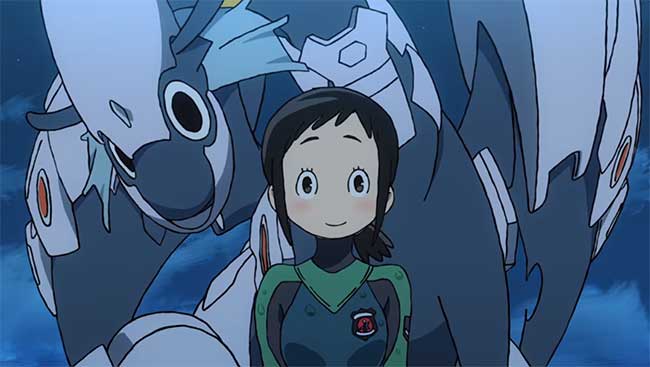
Anime as a medium encompasses many unique drawing styles. As such it is not rare to occasionally see a series that looks different. Most of the time a unique art style serves to differentiate a series from its peers, at times even adding a completely new layer of complexity and sophistication. A good example would be Lucky Star, an adult-oriented show that intentionally employs a moe art style for the sake of satirizing said style (and the overall otaku movement that existed at the time). This year’s Hisone & Masotan (Dragon Pilots) also features a distinct art style. Sadly however, this is one anime in which the art style gets in the way of the show, preventing it from reaching its true potential. Since the misuse of art in anime is quite a rare occurrence I thought it would be a good idea to analyses this show to better understand how this design choice came to be used and why it has inadvertently become the shows Achilles’ heel.
Hisone & Masotan character designs were drawn by mangaka Aoki Toshinao in his signature sketchy art style. In an interview conducted prior to the series airing executive director Higuchi Shinji explained why Aoki’s design were chose to serve as the backbone for the anime. At the time Higuchi said, “Aoki san’s characters and appeal will look great in modern animation. It will look fresh. It will look pure.“
And without a doubt Dragon Pilots looks very out of the ordinary, to a fault. The biggest and most immediate issue one will encounter when watching the series is that it is impossible to discern the age of the characters. Aoki’s art style simply does not allow for a clear distinction of age. As a result it took me quite some time to discern that Hisone (the shows main character) is in fact an adult. Things become even more confusing when the other dragon pilots appear. All of them, with the exception of Morris, act like children, and yet are depicted with similar proportions to Hisone and are expected to form romantic relationships in an adult-filled airbase.
Another issue can be found in the direction of the series, and how it eventually limits the effectiveness of the art. According to its Japanese Wikipedia page Hisone & Masotan was supposed to be a comedy, but upon watching the entire series it is clear that in the second half of the series the focus shifted towards a more action-oriented drama with military elements à la Strike Witches. This shift in focus is something the sketchy character designs simply cannot handle. Aoki’s unique art style does wonders when utilized in a parody-styled manga and shines the most in the comedic portions of the show. But it proves to be too simplistic to convincingly convey deep emotions such as sorrow, sadness and jealousy. So when the show tries to add this second layer of complexity it undermines its own base, spiraling out of artistic control.
This is where I would like to note that Hisone & Masotan is not the only anime series that limited itself due to its art style. Attack on Titan, one of the most successful shows in recent years, has also suffered from the inability to convincingly show certain emotions due to the constantly horror-stricken faces all of its characters share. However, Attack on Titan manages to escape criticism because at its core it is a horror action show, and the art style it uses conveys horror very convincingly. It is here that Dragon Pilots falters. In its second half it becomes a drama drawn as a parody, a serious story depicted jokingly. This fact greatly hinders the entire show on multiple levels. The design directly hurts the story. And to be perfectly honest, the story also hurts the art style. One could make the argument that if Aoki’s art was used for a purely comedic show it could have become a cultural phenomenon. Instead it was implemented incorrectly, resulting in an interesting, albeit very much flawed, show.
Steins Gate Visual Novel Review
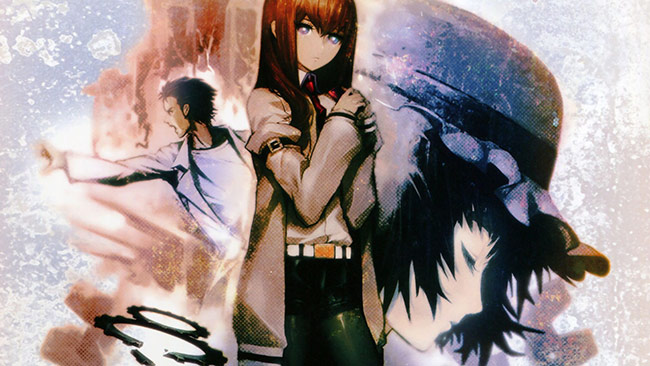
Okabe Rintaro is just another science-loving university student, albeit one with a chuunibyou complex. He spends his days in his makeshift lab in Akihabara, creating “evil” inventions together with his super hacker friend Daru and cosplay-loving childhood buddy Mayuri. When Okabe and Daru tries to make a phone-controlled microwave they unintentionally end up creating a time machine instead. Although they cannot physically use the microwave to go to the past they can send emails back in time. And of course they abuse the hack out of their invention and send multiple mails to the past, with various results. With the help of the genius scientist Makise Kurisu they further expend on the time machines’ powers and slowly begin to understand its inner workings. But messing with time is a dangerous undertaking and the dreadful butterfly effect soon hits Okabe with a vengeance. A terrible day unfolds in which Okabe’s world is shredded to pieces and reality becomes unbearable. There is only one way for Okabe to prevent that horrifying reality from happening – time travel to the past and redo everything and anything possible in order to find a solution.
Steins;Gate is very different from your typical visual novel. It takes place in a real place (Akihabara), makes references to real companies, and deals out scientific theories and facts at a frantic pace. It is a Dan Brown take on visual novel story telling. Steins Gate’s story offers a unique combination of drama, comical relief and petrifying horror. I must admit is starts off very slow. The story takes a couple of hours to really pick up and Okabe (or Hoein Kyouma if you prefer his “evil genius” name) is also a certified jerk. But as the hours went by I began to understand why this visual novel is so highly praised. When the action finally arrives it hits and hits hard. There is a certain point in which everything clicks and you enter a long and rewarding emotional roller-coaster. The terribly effective suspense audio tracks and the unforgiving horror scenes shook me badly. It has been a while since a visual medium had managed to make me care so much, or has caused me to mentally feel sadness or fear the way Steins Gate did. As the game’s episodes went by and I got to know the acting characters better I found most of them to be likable. Even Okabe, which I hated at first, grew on me once I understood the reason he acts like a chuunibyou brat all the time.
Since this is a visual novel the way you “play” the game is mostly comprised of passive reading. You do get to make decisions from time to time by sending email messages to the various lab members Okabe adds to his laboratory. The emails and responses you send, or not send, to people affect the progress of the story, although not always in predictable ways. This visual novel isn’t exactly a light reading material. You will need to invest a considerable amount of time if you were to finish Steins Gate. It took me 22 hours to get my first ending, and a total of 55 hours to get all the endings in the game. 55 hours may sound like a lot of time, but since the game has 5 different possible endings 11 hours a pop is actually pretty reasonable. The game’s art style should also be mentioned. It is beautiful and enchanting, and it makes me sad to know that the anime based on the game used a simpler art style for convenience sake.
I played the English PC version of Steins;Gate, in which the entire spoken dialog is dubbed (in Japanese) and there’s in-game trophy support. Each time a character says a key word, that word and a concise explanation about it is added to an in-game glossary. This is a fantastic solution for people not well versed in Japanese culture and 2ch forums slang. There are also images and music galleries that open up little by little as you play. The game experience is not perfect though. Steins Gate lacks the option to auto-skip scenes you already saw. Instead, you can only fast-forward them, which is tedious and a waste of time. Another big issue, which I briefly mentioned above, is that while you can change the outcome of the story by sending emails it is nearly impossible to predict the outcome of these emails. In order to get to the last (true) ending you must answer most of the emails in a specific manner – a feat almost impossible, unless you retry the game for hours on end or use a guide. That said the last chapter of the game is a must. Far from disappointing me, all the effort it took lead to an amazing and is immensely satisfying conclusion. And that really sums up my opinion on Steins;Gate. It’s a time investment and can be boring at times, but each time you reach a pivotal plot point the payoff you get for sticking around is huge. Steins Gate is the best visual novel I have played in years and definitely the best visual novel you can officially purchase in English today.
A Geek in Japan review
I was dumbstruck when I found out A Geek in Japan by Hector Garcia is an encyclopedia. In this day and age the shear idea of releasing an encyclopedia in paper form makes me cringe, especially when the book at hand is based on an internet blog. However, A Geek in Japan does have a few things to offer once you go beyond this initial reaction. To start off, Garcia’s definition of geek might be different from what you think. He defines a geek as an aficionado, and a Geek in Japan is essentially an all-encompassing book about Japan. Across its 160 pages it covers all manners of Japan-related subjects: history, mannerism, work ethics, traditional culture, popular culture and more..
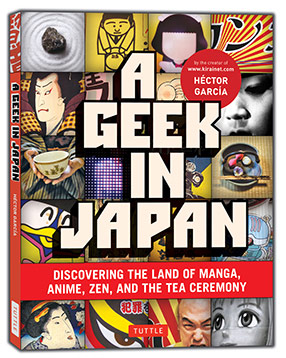 The book is broadly divided into several chapters but the actual subjects covered in each chapter may or may not be related to that chapter’s title. Seemingly unrelated subject are presented next to each other in rapid secession. For example, the history Buddha Siddhartha, a short introduction to the seven gods of fortune and the peculiar subject “why do Japanese women cover their mouths when they laugh?” can be found next to each other. Naruto appears alongside an explanation on blood groups in Japan, and so on. When I started reading this book I found this to be rather annoying, but as it turns out it’s one of a Geek in Japan’s strongest point. You can go on the net and easily find a much more detailed account on all the subjects presented here, but the sheer randomness of their order is what makes the book work. I would never have thought to check why the importance of blood types is so ingrained in Japan’s modern culture or why hay fever is such a common thing over there. But since these subjects were alongside other subjects I was reading I just kept on reading and absorbed them. As a result I learned some fascinating pieces of trivia.
The book is broadly divided into several chapters but the actual subjects covered in each chapter may or may not be related to that chapter’s title. Seemingly unrelated subject are presented next to each other in rapid secession. For example, the history Buddha Siddhartha, a short introduction to the seven gods of fortune and the peculiar subject “why do Japanese women cover their mouths when they laugh?” can be found next to each other. Naruto appears alongside an explanation on blood groups in Japan, and so on. When I started reading this book I found this to be rather annoying, but as it turns out it’s one of a Geek in Japan’s strongest point. You can go on the net and easily find a much more detailed account on all the subjects presented here, but the sheer randomness of their order is what makes the book work. I would never have thought to check why the importance of blood types is so ingrained in Japan’s modern culture or why hay fever is such a common thing over there. But since these subjects were alongside other subjects I was reading I just kept on reading and absorbed them. As a result I learned some fascinating pieces of trivia.
Hector Garcia’s love for Japan is apparent in each page. In his remarks on daily life in Japan I found many resemblances to my own experiences in the land of the shining sun. In later chapters Garcia gives a detailed overview on daily life practices in Japan, from many different perspectives. You can read why school kids there have such a hard time, how a salary man handles himself, what is expected from house wives and how the elderly pass their time. At no point does Garcia clarify how he procured this information though. Did he really interview a retired old man to learn how Japanese spend their retirement years?
Speaking of information, the latest reference to date I could find in this book was a record of an event from 2006. And sure enough there are a couple of outdated concepts in the book that also show it might not be as up to date as it should have be.
A Geek in Japan does feature the words manga and anime prominently on the cover, so you can probably be sure it has things to say on these subjects. And sure enough you can find a myriad of small subject regarding manga and anime. But much like the rest of the book this is done in a somewhat eclectic fashion. Chapter 8, which is entitled “The world of manga & anime” only contains one page on anime. But by the time you reached this chapter you probably ran into anime subjects in other chapters, and a handful of anime subject awaits in chapter 10, that deals with television. Such is the general flow of this book, for better or worse. The book ends with two chapters about tourism in Japan. These chapters I liked the most. As expected from a book by and for Geeks Garcia gives tourism advice based on geeky themes: where to go on a gadget tour, an otaku tour, a culture tour, and so on. Again, it’s not as varied and in-depth as what you may find in a travel book, but if you are interested in a trip to Japan and want to soak up cultural information as well as travel tips a Geek in Japan might prove surprisingly effective.
So is this book a valuable in-depth knowledge bank on Japan? Probably not. Is it a hip up-to-date representation of Japan’s popular culture? Hardly. What a Geek in Japan does offer is variety – juicy pieces of Japanese trivia randomly spread across the board. It’s a coffee table book that fans of Japanese culture can casually pick up and enjoy. It might also be a good gift to buy for a friend who’s planning a trip to Japan in the near future.
You can grab your copy of a Geek in Japan on Amazon or directly from the publisher at Tuttle Publishing’s website.

